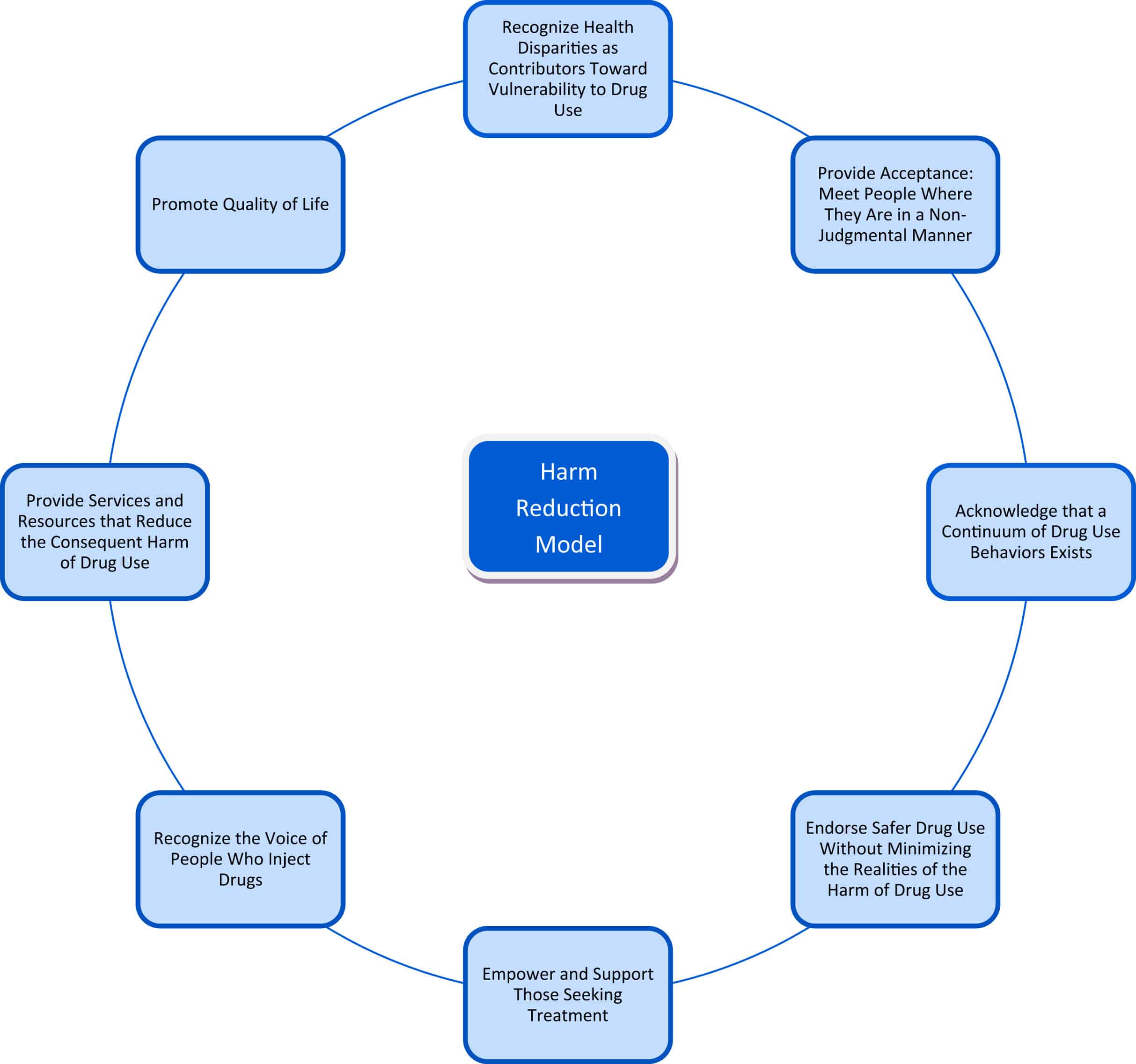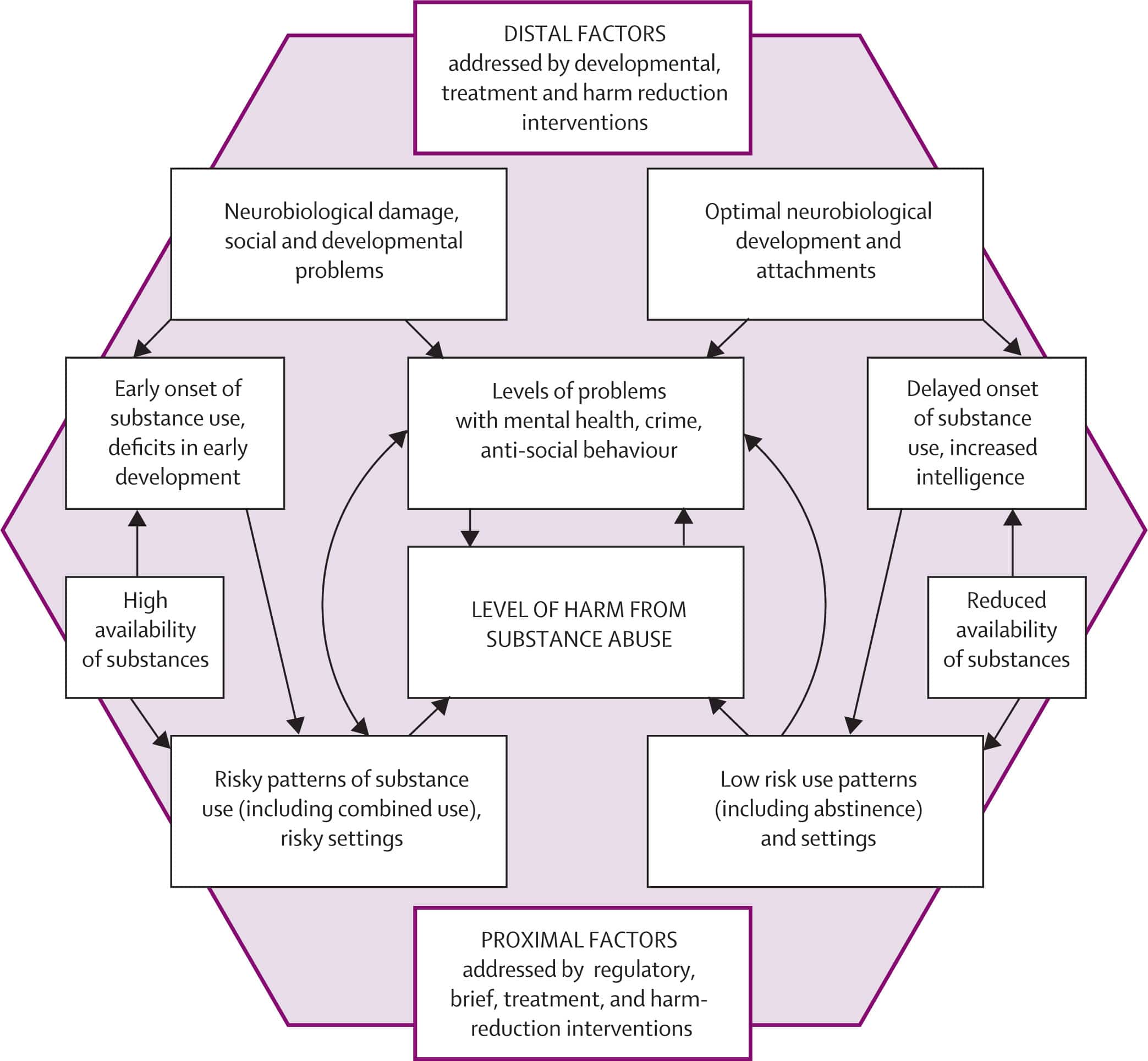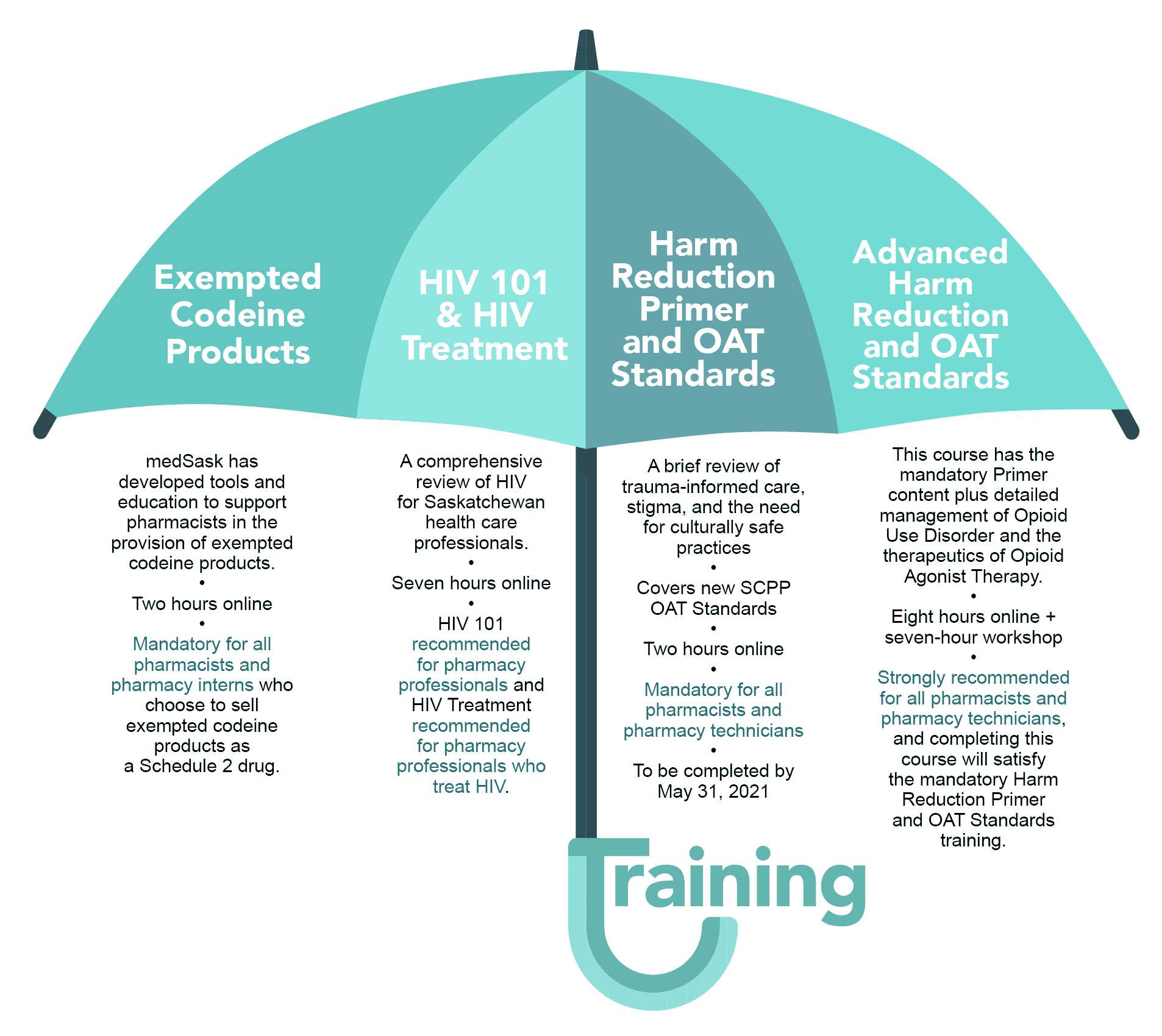Implementing A Harm Reduction Approach To Medications For Addiction Treatment In Outpatient Settings
Medications for addiction treatment is an effective tool for the treatment of opioid use disorder. MAT providers are increasingly embracing harm reduction strategies in their clinical practice in order to expand access to MAT and further improve patients quality of life.
Harm reduction is a set of principles and strategies that seek to minimize the risks associated with drug use, including:
- Health and dignity of people who use drugs.
- Participant-centered services.
- Participant involvement in the programs and policies that serve the community.
- Participant autonomy.
- Consideration of sociocultural factors impacting peoples relationship to substance use.
- Pragmatic and realistic approaches to substance use.
Key harm reduction strategies include MAT, syringe access programs, naloxone distribution, and drug checking.
The goal of this play, developed by the Camden Coalition of Healthcare Providers, is to help you identify and implement harm reduction approaches in your practice to minimize patients risk of relapse and overdose.
Gop Candidate In New Hampshire Claimed Narcan Keeps People Addicted
Don Bolduc, the Donald Trump-aligned retired Army brigadier general who is the Republican nominee for Senate in New Hampshire, has claimed that administering the lifesaving opioid treatment naloxone to overdose victims keeps them addicted and leads to people getting thrown into the welfare system, according to audio newly obtained by HuffPost.
Naloxone, commonly referred to by the brand name Narcan, is used to stop the symptoms of an opioid overdose, either through a nasal spray or muscle injection. The drug counters the slowed-down breathing that often leads to death. Available over the counter, its frequently carried by police officers and paramedics and has been credited with reducing overdose deaths as the opioid crisis rages on throughout the country.
Bolducs comments, which were made during his first run for Senate during the 2020 election cycle, enraged recovery advocates in the state, who said the candidate is helping uphold the stigma around addiction.
Its barbaric, said John Burns, a recovering addict who runs the nonprofit SOS Recovery and once served on a council advising New Hampshire Gov. Chris Sununu on addiction issues. It just shows me he has very little understanding of addiction, treatment and recovery.
New Hampshire, where Bolduc is challenging Democratic Sen. Maggie Hassan, was once considered ground zero for the opioid crisis. It had the nations second-highest overdose death rate in 2015.
Expansion Programs Of Overdose
As of July 2017, all 50 states in the U.S. have passed legislation to make naloxone, the life-saving medication that can reverse the side effects of an opioid overdose, more accessible. These expansion programs help to reduce the number of overdose deaths by making it more readily available and by educating people on how to use it.
You May Like: How To Support Someone With Drug Addiction
Quality Journalism Doesn’t Come Free
Perhaps it goes without saying but producing quality journalism isn’t cheap. At a time when newsroom resources and revenue across the country are declining, The Texas Tribune remains committed to sustaining our mission: creating a more engaged and informed Texas with every story we cover, every event we convene and every newsletter we send. As a nonprofit newsroom, we rely on members to help keep our stories free and our events open to the public. Do you value our journalism? Show us with your support.
How Our Drug And Alcohol Detox Services Can Promote Change

At Spring Gardens Recovery, we provide a safe, effective way for individuals to begin addiction recovery. Our drug detox and alcohol detox programs work to cleanse your body of those harmful substances and prepare you for a better, more productive life.
Our caring, compassionate staff does more than just eliminate alcohol or drugs from your system. We also offer integrated counseling to help you understand your chemical addiction and change behaviors. This traditional approach combined with holistic treatment methods help to heal the mind, body, and spirit. Spring Gardens Recovery provides all of this, along with luxurious amenities in a peaceful Spring Hill, Florida alcohol rehab atmosphere.
The start of you or your loved ones recovery is just a phone call away. Call Spring Gardens Recovery today at .
You May Like: How Long Does It Take To Get Addicted To Nicotine
Why Are Harm Reduction Services Needed
The U.S. is experiencing the most significant substance use and overdose epidemic it has ever faced, exacerbated by a worldwide pandemic, and driven by the proliferation of highly potent synthetic opioids containing primarily fentanyl and other analogues.
Provisional data from CDC show that we have crossed the tragic milestone of a predicted 100,000 overdose deaths in 12 months from May 2020 to April 2021 this represents a nearly 29 percent increase compared to the same window of time last year.
Harm reduction services save lives by being available and accessible in a matter that emphasizes the need for humility and compassion toward people who use drugs. Harm reduction plays a significant role in preventing drug-related deaths and offering access to healthcare, social services, and treatment. These services decrease overdose fatalities, acute life-threatening infections related to unsterile drug injection, and chronic diseases such as HIV/HCV.
Early Attempts At Syringe Exchange Research Early Syringe Exchange Research And Early Resistance To Syringe Exchange Research
The idea of setting up pilot programs, evaluating them, and then expanding them based on the evaluation finding was also attempted in the USA, but with considerable difficulties. In 1985, the New York City Department of Health proposed a pilot program, but the memorandum from the Commissioner of Health to the Mayor was leaked to the police, who effectively vetoed the proposal. A pilot project with an evaluation component was then proposed and adopted in 1988 despite very strong opposition . The project was described by one opponent as genocide for the African-American community. The pilot project did produce positive results in getting PWID into long-term substance use treatment but was not large enough to have an effect on unsafe injection and HIV transmission. The pilot project was discontinued in 1989.
In 1988, opponents of syringe exchange added a provision to the funding bill for the Department of Health and Human Services that prohibited the use of federal funds for supporting syringe exchange programs until the Secretary of HHS found that syringe exchange programs were safe and effective. This wording was parallel to the federal Food and Drug Administration requirement that new drugs be shown to be safe and effective before they are approved for sale in the USA.
Fortunately, as noted above, several private foundations did fund syringe exchange research, in particular amFAR and RWJF.
Don’t Miss: How Do I Stop An Addiction
Treatment For Drug And Alcohol Addiction
If you are struggling with an addiction to drugs or alcohol and need help, RehabCenter.net is your online resource for the professional support and comprehensive, evidence-based treatment options to meet your individual needs. Contact us and speak with someone today in confidence and discover a life free from the confines of addiction a new and rewarding life in recovery.
Featured Activity Facilitate Evidence
Because the presence of fentanyl mixed with other types of drugs poses a significant risk of accidental overdose and is often hard to detect, NIDA and FDA are supporting research to investigate the effectiveness of rapid-acting fentanyl test strips in modifying drug use behaviors and exploring drug checking needs in clinical settings.
CDC, SAMHSA
Don’t Miss: How To Help An Addict Stay Clean
Implementing Comprehensive Hiv Services In Syringe Services Program Settings
This video spotlights harm reduction at the IDEA Exchange in Miami, Fla., a comprehensive syringe services program where NIH grantee Dr. Hansel E. Tookes, III, and his team work to deliver integrated HIV and harm reduction services to people who use drugs and those in recovery, and learn from research projects how to optimize care to achieve the best outcomes.
Why Is Harm Reduction Important
The disease model of addiction that treats abstinence as the only solution doesnt work for everyone. Experts on harm reduction say its time to change our thinking about addiction. Harm reduction approaches examine the complex psychological, social, and biological drivers behind the addiction. Often, substance use begins as a coping mechanism that winds up being ineffective and destructive. When a person understands the reasons behind their substance use, they can begin to get it under control.
Don’t Miss: Why Do People Get Addicted To Opioids
Respecting The Rights Of People Who Use Drugs
Harm reduction is fundamentally grounded in principles that aim to protect human rights and improve public health. Treating people who use drugsalong with their families and communitieswith compassion and dignity is integral to harm reduction. The use of drugs does not mean people forfeit their human rights – they remain entitled to the right to life, to the highest attainable standard of health, to social services, to privacy, to freedom from arbitrary detention and to freedom from cruel, inhuman and degrading treatment, among others.
Main Arguments And Concerns

The main argument for drug harm reduction is that it dramatically reduces the spread of HIV and Hepatitis C. In communities where needle exchanges are illegal, addicts tend to share needles due to a lack of supplies and education. Canadian Press reported the findings of a 15-year study conducted in Vancouver from 1996 to 2011. Co-director of the Urban Health Research Initiative, Dr. Thomas Kerr, explained that Vancouver declared a public health emergency during the Nineties due to a record high spread of HIV infection. By 2011, the number of users who said they shared needles dropped from 40% to 1.7%.
Harm reduction centers are common in Canada, Europe and the UK. In the US most of the red and blue states remain divided over the effectiveness of such programs. Opponents argue that giving junkies clean syringes encourages negative behavior. Some elucidate that in cities where they give away hypodermic needles, there has been a surge in demand that must point to higher rates of drug use.
Recommended Reading: How To Control Food Addiction
Four Pillars Drug Strategy
About the four pillars approach
The four pillars approach to drug addiction was first implemented in Europe in the 1990s, and is based on four principals:
Successfully used in such cities as Geneva, Zurich, Frankfurt, and Sydney, this four pillars approach has resulted in a:
- Dramatic reduction in the number of drug users consuming drugs on the street
- Significant drop in overdose deaths
- Reduction in the infection rates for HIV and hepatitis.
The Introduction Unseen Spread And By The Discovery Of Hiv Among Pwid In The Usa
AIDS was first observed among PWID in the USA in 1981, several months after being first observed among men who have sex with men . The initial observations were made on relatively small numbers of PWID with AIDS and were almost exclusively confined to the northeastern USA. It was not until the development of the HIV antibody test in 19841985 and large-scale antibody testing for HIV that the full scope of the problem was revealed. HIV had been spreading among PWID in New York City and in many other USA and European cities during this time. HIV prevalence had reached 50% in New York City, and the virus was present among PWID in many other USA and Western European cities .
There were several aspects of the timing of the first observation that made it extremely difficult to combat this new epidemic. First, as noted above, HIV had already spread in the USA and in many other countries before AIDS was first observed among PWID, so that it was already too late to prevent the initial spread of the virus. Second, important changes in the politics and in the epidemiology of drug use had recently occurred. In the late 1970s, there was a movement to decriminalize possession for personal use of marijuana in some states, and even consideration of decriminalization of cocaine possession for personal use . This changed with the election of Ronald Reagan, in 1980, who adopted a just say no attitude towards drug use.
Don’t Miss: How Do You Become Addicted To Alcohol
What Is The Harm Reduction Model
Harm reduction is a public health approach to managing high-risk behaviors, including drug and alcohol addiction.
It focuses on reducing the negative outcomes of the action. The harm reduction model values abstinence, but abstinence is not the only goal.
The main priorities of are keeping people alive and reducing suffering. This approach meets the needs of patients where theyre at in their journey and recognizes that some people may not be willing or able to change their behavior.
Harm reduction focuses on providing judgment-free healthcare solutions that lower the health risks related to these behaviors. These include safe access to drug paraphernalia, allowing drug intake in a controlled environment, and health education.
The approach is gaining momentum, with over 200 syringe exchange programs operating in the United States today.
The Avoidance Of Stigma
Harm reduction practitioners accept people who use drugs as they are and are committed to meeting them where they are in their lives without judgement. Terminology and language should always convey respect and avoid stigmatising terms or divisions between good and bad drugs. Stigmatising language perpetuates harmful stereotypes, and creates barriers to health and social services.
Recommended Reading: How To Get Rid Of Fast Food Addiction
Benefits Of Harm Reduction Model On Individuals And Communities
Programs guided by the harm reduction model have a positive impact on the overall health of individuals struggling with drug addiction by reducing harm associated with the spread of bloodborne pathogens, overdose, and vulnerability on the street. They also provide a non-judgemental access to treatment for individuals who are ready to discontinue drug use.
These impacts are felt community-wide and benefit also from reduction in the spread of disease, as well as less public exposure to drug use or crime associated with drug use. In some cases, harm reduction programs restores individuals who formerly abused heroin to a productive status within their community.
Studies also indicate that harm reduction programs more effectively reduce risky behaviors associated with teenage use of alcohol and marijuana, than abstinence only programs like the Drug Abuse Resistance Education .
Nurse To Present Talk On Harm Reduction In Addiction Treatment
4/1/13 ASHLAND, Ohio – Drug abuse and addiction are in all of our communities and more often now even in our own families. Addiction is a multifaceted problem with many causes and many consequences. Not only does it impact the individual, but it undeniably affects family, friends and the community. Many who thought that drug abuse was a distant problem existing only in other families and in other towns are now feeling the personal toll of loved ones, friends and neighbors who have become involved.
David Slyter, BSN, an emergency room nurse and a Free Clinic volunteer, will present a talk on Harm Reduction in Health Care as an alternate philosophy to dealing with drug abuse and addiction. The presentation, sponsored by Ashland Center for Nonviolence, will be held in the Ridenour Room of the Dauch College of Business and Economics on the Ashland University campus, on Wednesday, April 17, at 7 p.m.
The event is free and the public is invited. Social worker and counselor continuing education credit will be available through the Kroc Center, provider #RCS050903.
Slyters presentation will share further information about what harm reduction looks like, as well as give some examples from other parts of the world. He will provide information on programs in Ohio, as well as connect with people who may have an interest in addressing the negative consequences of drug use in our local communities.
Recommended Reading: What To Do When Your Child Is Addicted To Electronics
Principles Of Harm Reduction
As there is no strict definition of harm reduction, there are several slightly different harm reduction models. Each type of harm reduction model has some variations, but there are some core principles that are typically the same for each model, including:
- Respecting the individual rights of those who use drugs or alcohol
- Only using techniques that are based on evidence
- Avoiding stigma and negative perceptions of those who use substances
- Reducing the risk of harm associated with using substances
- Offering access to resources that can help people stop using substances
Some programs or organizations may have their own unique model for harm reduction programs, depending on their goals. The core principles of harm reduction will, however, generally be the same, even if they are worded somewhat differently or provided in greater detail.
A Brief History Of Harm Reduction

Opiate abuse has been a problem in Western society since doctors started overprescribing the medication in the 19th century. However, harm reduction treatments did not come into focus in the US until the AIDs epidemic of the late Eighties.The Health Omnibus Program Extension Act of 1988 made it illegal to distribute syringes. Harm reduction advocates and AIDs activists fought back citing evidence that needle exchanges reduced the spread of HIV and did not increase the overall rate of drug use.
You May Like: How To Cure Gaming Addiction
Supervised Injection Sites And Needle Exchanges
Vancouvers harm reduction programs include the supervised injection site , needle exchanges and low-threshold community health services. Vancouver has 24-hour-a-day access to needles through low-threshold, peer-based needle exchanges, to mobile exchanges and needle exchanges attached to primary health care services.
North Americas first Supervised Injection Site , InSite, opened in Vancouver in September 2003.
